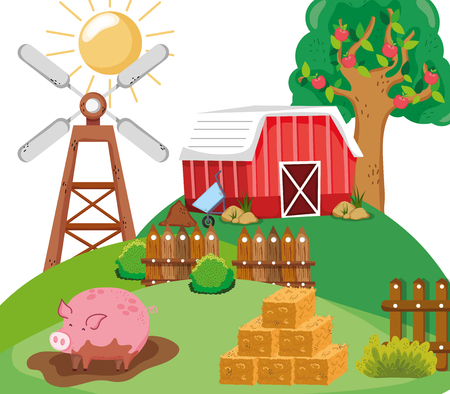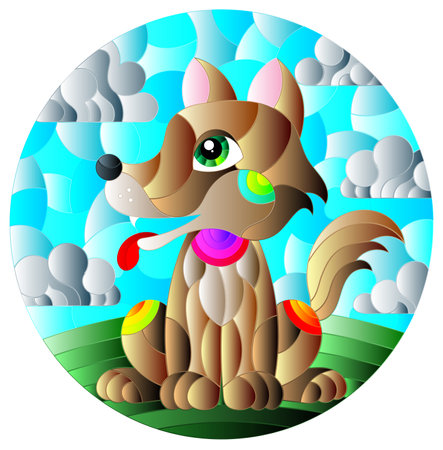1. Secure Fencing and Boundaries
Ensuring your backyard has sturdy, escape-proof fencing is one of the most important steps in creating a pet-friendly outdoor space. A well-secured yard keeps your furry friend safe from potential dangers and prevents them from wandering off.
Check for Weak Spots and Gaps
Regularly inspect your fence for any gaps, weak spots, or loose boards that your pet could squeeze through or dig under. Even small openings can become escape routes, especially for smaller breeds or curious pets.
Choose the Right Fence Height
The height of your fence should match your pets size and jumping ability. Some dogs, like Huskies and German Shepherds, are skilled jumpers and may require a taller fence to keep them contained.
Recommended Fence Heights by Pet Size
| Pet Size | Recommended Fence Height |
|---|---|
| Small Breeds (Chihuahua, Dachshund) | 3-4 feet |
| Medium Breeds (Beagle, Cocker Spaniel) | 4-5 feet |
| Large Breeds (Labrador Retriever, Golden Retriever) | 5-6 feet |
| High-Jumping Breeds (Husky, German Shepherd) | 6+ feet |
Prevent Digging Under the Fence
Some pets love to dig, which can lead to escapes. To prevent this:
- Bury the bottom of the fence at least 12 inches underground.
- Add a concrete or paver border along the fence line.
- Use chicken wire or hardware cloth along the base of the fence.
Secure Gates and Latches
Your fence is only as secure as its gate. Make sure all gates have sturdy latches that cannot be easily pushed open by a curious pet. For extra security, consider using self-closing hinges or padlocks on gates that provide access to roads or other unsafe areas.
Monitor Your Pet’s Behavior
No matter how secure your fencing is, always observe how your pet interacts with it. Some pets may attempt to climb, chew through, or dig under barriers. If you notice escape attempts, reinforce weak areas immediately.
A strong and well-maintained fence gives you peace of mind while allowing your pet to safely enjoy their time outdoors.
2. Safe and Non-Toxic Plants
Creating a pet-friendly backyard means choosing plants that are safe for your furry friends. Some common garden plants may look beautiful but can be highly toxic to pets if ingested. To keep your outdoor space safe, its important to know which plants to avoid and which ones are safe.
Plants to Avoid
Certain flowers, shrubs, and even household plants can be dangerous to pets. Here are some common toxic plants that should not be in a pet-friendly yard:
| Toxic Plant | Potential Harm |
|---|---|
| Lilies | Highly toxic to cats; can cause kidney failure. |
| Azaleas | Can cause vomiting, diarrhea, and even heart issues in pets. |
| Oleander | Extremely toxic; affects the heart and can be fatal. |
| Sago Palm | Toxic to both dogs and cats; can cause liver failure. |
| Daffodils | Can lead to severe vomiting, diarrhea, and low blood pressure. |
Pet-Safe Plant Options
If you want a lush, green backyard without the risk, consider planting pet-friendly options. These plants are generally safe for dogs and cats:
- Basil: A great herb thats safe for pets and useful in cooking.
- Rosemary: Non-toxic and adds a fragrant touch to your garden.
- Marigolds: Bright flowers that are safe for pets while also repelling pests.
- Zinnias: A colorful option thats non-toxic for dogs and cats.
- African Violets: A safe flowering plant that thrives indoors and outdoors.
Do Your Research Before Planting
The best way to ensure your backyard is safe is by researching plants before adding them to your outdoor space. Some pets may have unique sensitivities, so always check if a plant is pet-safe before bringing it home. You can consult resources like the ASPCA’s list of toxic and non-toxic plants or ask your veterinarian for recommendations.
Create a Safe Garden Environment
Avoid using chemical fertilizers or pesticides that could harm pets. Opt for natural alternatives whenever possible. Additionally, if youre unsure about any existing plants in your yard, consider removing them or fencing off areas where your pet cannot access them.
Your backyard should be a fun and safe place where your pet can explore without risk. By selecting non-toxic plants and being mindful of what grows in your outdoor space, you create an environment that keeps your furry friend happy and healthy!

3. Shade and Water Access
Keeping your pet cool and hydrated is essential, especially during hot weather. Without proper shade and access to fresh water, pets can quickly overheat, leading to heat exhaustion or even heatstroke. To ensure a safe and comfortable outdoor space, follow these tips for providing adequate shade and hydration.
Provide Shaded Areas
Pets need a place to escape direct sunlight, especially during the hottest parts of the day. Here are some ways to create shaded areas in your backyard:
- Trees and Bushes: Natural shade from trees or large bushes can help keep your pet cool.
- Canopies or Umbrellas: Set up a patio umbrella or a canopy to provide instant shade.
- Pet Tents or Shade Cloths: Use pet-specific tents or attach shade cloths to fences or pergolas for extra coverage.
- Covered Patios or Decks: Encourage your pet to rest under covered areas to avoid prolonged sun exposure.
Ensure Fresh Water Availability
Your pet should always have access to clean, fresh water while spending time outdoors. Consider the following methods to keep their water cool and accessible:
| Water Source | Description |
|---|---|
| Bowl with Fresh Water | Refill water bowls frequently and place them in shaded areas to prevent overheating. |
| Automatic Water Dispensers | A pet water fountain or dispenser ensures a continuous supply of clean water. |
| Kiddie Pool | A shallow pool filled with cool water allows pets to step in and cool off on hot days. |
| Misting System | A gentle misting system can help lower temperatures and keep pets comfortable. |
Avoid Overheating Signs
Pets can easily overheat in warm weather. Watch for signs such as excessive panting, drooling, lethargy, or difficulty breathing. If you notice these symptoms, move your pet to a shaded area immediately and provide cool water.
4. Avoid Harmful Chemicals
Keeping your backyard safe for pets means being mindful of the chemicals you use in your outdoor space. Many common lawn care products, such as pesticides and fertilizers, contain toxic ingredients that can be harmful to pets if ingested or even absorbed through their paws.
Choose Pet-Safe Lawn Care Products
Whenever possible, opt for pet-friendly alternatives that are free from harmful chemicals. Look for organic fertilizers and natural pest control options that won’t pose a threat to your furry friends.
Common Lawn Chemicals to Avoid
| Chemical Type | Potential Risks to Pets |
|---|---|
| Pesticides (Insecticides, Herbicides) | Toxic if ingested; can cause vomiting, diarrhea, seizures, or worse. |
| Synthetic Fertilizers | Can lead to digestive issues and skin irritation if pets come into contact. |
| Moss and Weed Killers | Often contain dangerous chemicals that can be lethal to pets. |
Store Chemicals Safely
If you do need to use any lawn care chemicals, make sure they are stored securely out of reach of your pets. Keep them in sealed containers and place them in a locked shed or high shelf where curious pets won’t have access.
Signs of Chemical Poisoning in Pets
- Excessive drooling
- Lethargy or weakness
- Tremors or seizures
- Vomiting or diarrhea
- Difficulty breathing
Wash Paws After Outdoor Playtime
If your pet has been playing on treated grass or soil, wipe their paws with a damp cloth before they come inside. This helps prevent accidental ingestion of any residual chemicals when they groom themselves.
A Safe Yard Equals a Happy Pet!
Your pet’s health and safety should always come first. By avoiding harmful chemicals and choosing pet-friendly alternatives, you can create an outdoor space where your furry friend can play freely without risk. A little extra caution goes a long way in ensuring your backyard remains a safe haven for your beloved companion.
5. Pet-Friendly Play Areas
Creating a designated play area in your backyard helps keep your pets active, entertained, and safe. By incorporating pet-friendly toys, agility features, and soft ground surfaces, you can encourage healthy exercise while reducing the risk of injury.
Choose Safe and Engaging Toys
Select durable, non-toxic toys that are designed for outdoor use. These can include chew toys, fetch balls, or interactive puzzle toys to keep your pet mentally stimulated.
Recommended Outdoor Toys
| Toy Type | Benefits |
|---|---|
| Chew Toys | Helps with dental health and prevents boredom |
| Fetch Balls | Encourages exercise and bonding time |
| Puzzle Toys | Mental stimulation to keep pets engaged |
| Tug Ropes | Great for interactive play and strengthening muscles |
Add Agility Features for Exercise
If you have an energetic pet, consider adding agility features such as tunnels, ramps, or hurdles. These structures provide a fun challenge and help improve coordination.
Simple Agility Setup Ideas
- Tunnels: Great for small and large dogs to run through.
- Hurdles: Adjustable jumps to build agility skills.
- A-Frame Ramps: Helps with balance and confidence.
- Tire Jumps: Encourages leaping and coordination.
Select Soft Ground Surfaces
The type of ground in your pet’s play area is important for their comfort and safety. Hard surfaces like concrete can be tough on paws, so opt for softer materials instead.
Best Ground Cover Options
| Surface Type | Description | Paw-Friendly? |
|---|---|---|
| Nontoxic Grass | A natural surface that provides cushioning. | ✔ Yes |
| Mulch (Pet-Safe) | A soft option that reduces impact but should be free of toxic wood types. | ✔ Yes (with safe mulch) |
| Synthetic Turf | Mimics real grass but requires maintenance to stay clean. | ✔ Yes |
| Pebbles/Rocks | Avoid sharp stones; smooth river rocks can be used selectively. | ✘ No (can be rough on paws) |
| Pavement/Concrete | A hard surface that can become hot in summer. | ✘ No (can cause paw burns) |
A well-designed pet-friendly play area encourages exercise, mental stimulation, and overall happiness while ensuring your furry friend stays safe outdoors. By incorporating the right elements, you can create an enjoyable backyard space where your pet feels comfortable and engaged.


